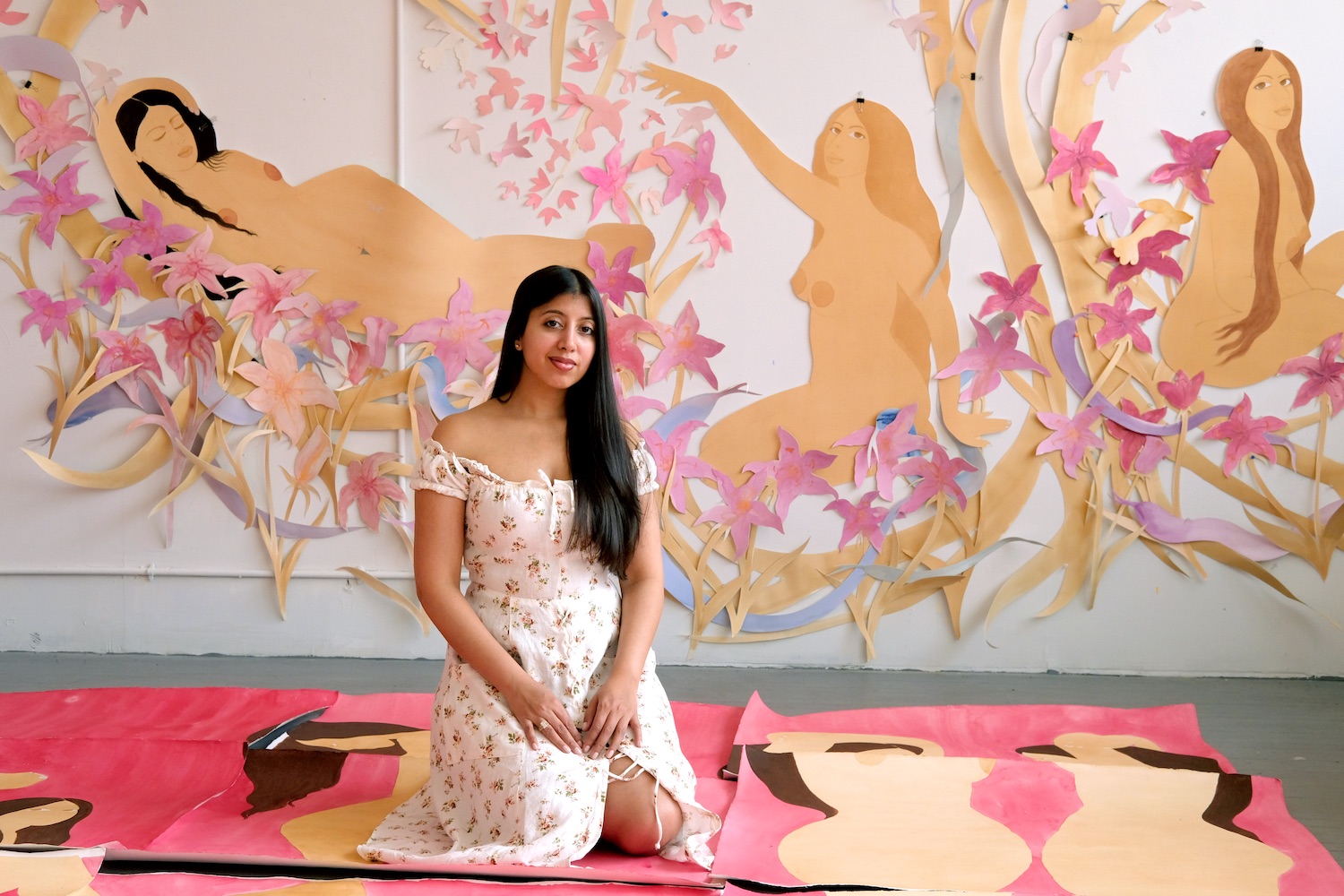Skye Volmar’s debut solo show at Deli Gallery in Brooklyn, “flower, child,” is on view through March 21. Featuring works in a range of media—like colored pencil, glass mosaic, oil and acrylic paints, and even makeup—the exhibition is a testament to the dynamic practice of the emerging artist and 2019 Rhode Island School of Design graduate, which incorporates themes like reflection and Volmar’s own experience as a Black woman.
Throughout the presentation, the gaze of the visitor is captured by colorfully depicted motifs like the recurrence of flowers, butterflies, women’s bodies, and other imagery typically associated with femininity. Referencing recognizable tales like The Princess and the Frog and that of Echo and Narcissus, Volmar muses on the experiences of Black girls and their journey into womanhood—seen through works like the vibrant green Frog Princess, in which a girl-turned-frog sporting pink nail polish weeps with her face in hands; and the entrancingly shadowy Circulatory System, which features a figure mirrored as if they belong to two separate universes.
Whitewall spoke with Volmar to learn more about “flower, child” and the artist’s practice.
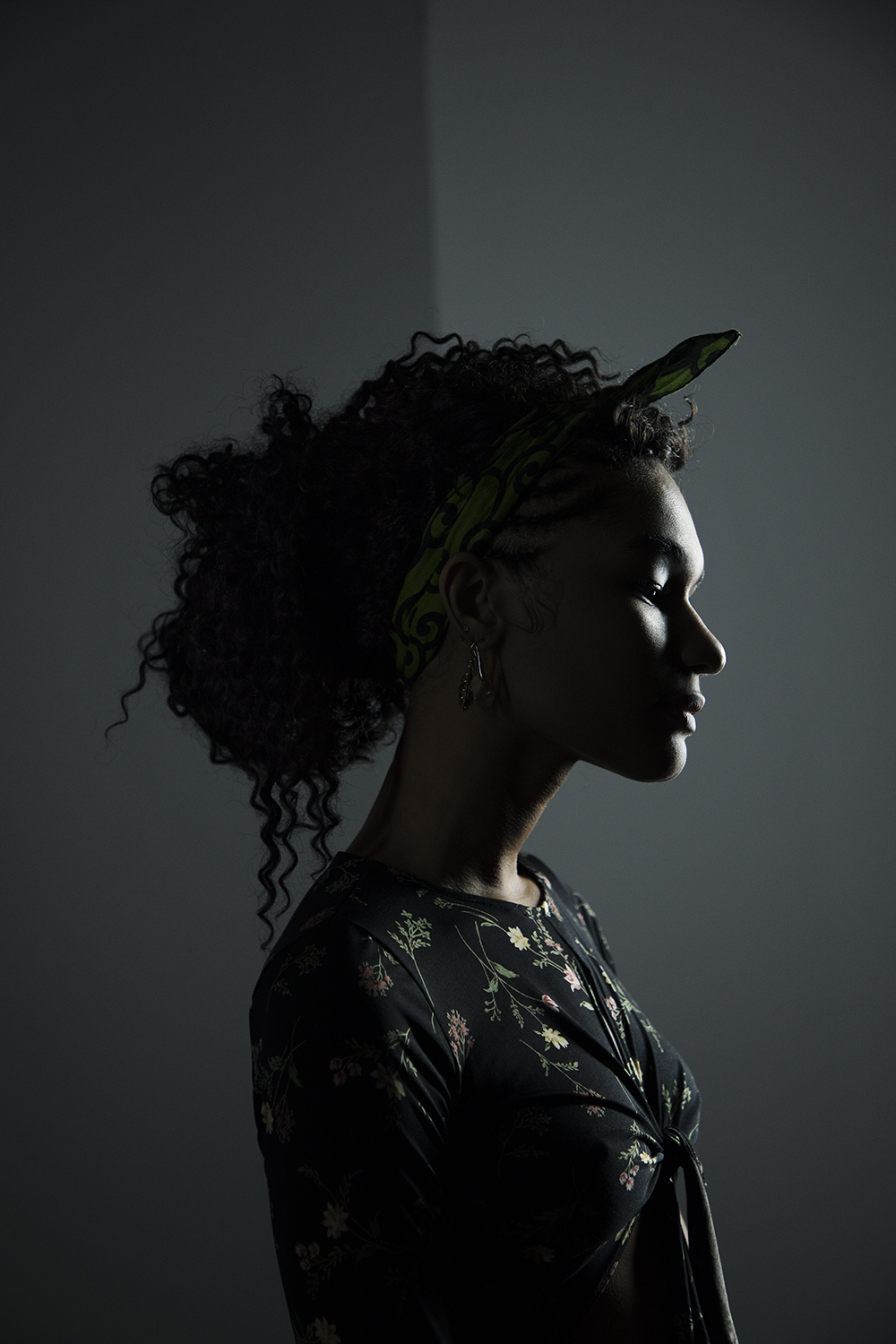 Portrait of Skye Volmar by Steve Benisty.
Portrait of Skye Volmar by Steve Benisty.
WHITEWALL: What was the starting point for “flower, child?”
SKYE VOLMAR: I wrestled with metaphors that equate flowers, femininity, and female genitalia. I began with the word deflower. “Deflowered” is a metaphor in which she is deprived of her beauty, innocence, vitality, virginity. Eventually, I came to consider the role of a flower girl. Flower girls symbolize the coming of adulthood, which is the creation of womanhood through deflowered girls. She typifies both contemporary and historical notions of western femininity.
I settled on the title “flower, child,” because it better communicates my desire to unpack the language of [black] girlhood. I like that “flower, child” reads like an impersonal list or command. I like that it ends up suggesting the compartmentalization of two similar, but distinct, “non-sentient,” beings or objects. The conceit of that language, both beautiful and violent, is maybe made a bit more clear.
WW: You’ve included highly recognizable symbols of girlhood, in many of the works on view, like flowers, butterflies, and barrettes. While cute and common to young girls, these ultra-feminine accessories are used as a device against the hyper-sexualization of Black girls. What’s something you hope your viewers might gain from considering this perspective?
SV: Empathy—empathy born of self-reflection, rather than self-absorption. Empathy that facilitates compassion and kindness.
The work is so so open to interpretation and subject to projection. I suspect, drawings and paintings can only nudge people to consider an alternative perspective. I can muse and make meaning all I want, but they’re also just cool objects infused with a bit of my energy.
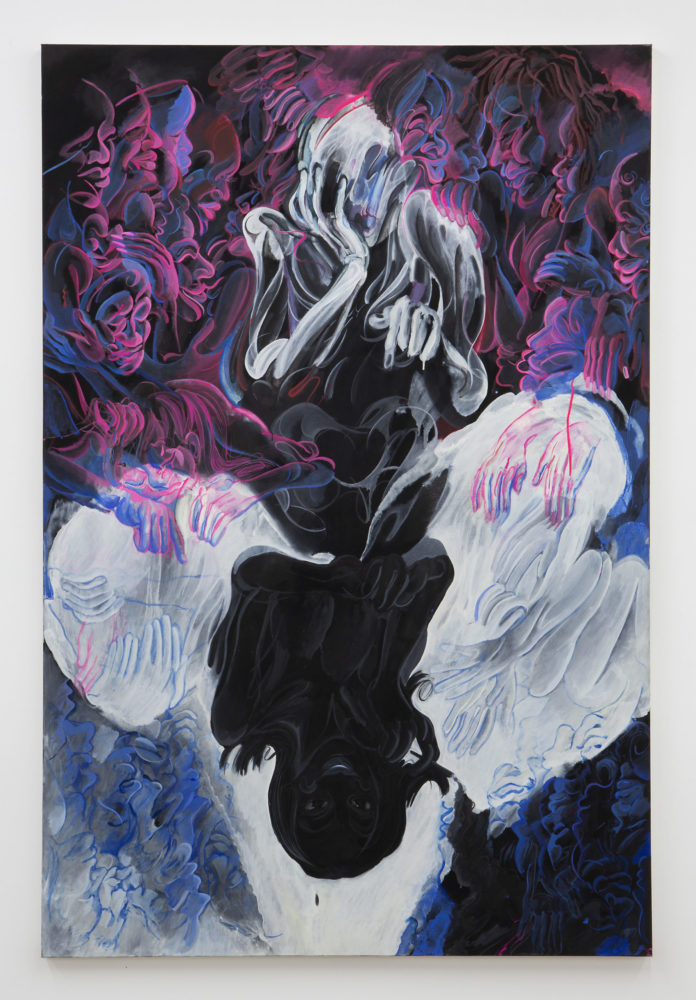 Skye Volmar, “Circulatory System,” 2020, oil and acrylic on canvas, 72 × 48 inches; courtesy of the artist and Deli Gallery.
Skye Volmar, “Circulatory System,” 2020, oil and acrylic on canvas, 72 × 48 inches; courtesy of the artist and Deli Gallery.
WW: Circulatory System, the largest work in the show, appears to depict a sort of mirroring of light and dark. What can you tell us about this painting?
SV: It’s a painting about a singular kind of ‘twoness;’ one I experience as a black woman/person. It’s about this twoness and a desire to be one, to reconcile internal vs. external perceptions.
In adolescence, I came to understand that I have at least two selves: my self at home and my self outside. My introversion vs. my extroversion. My Black American body holds both myself and a perception of itself informed by a predominantly racist, white supremacist society. That’s what the twoness refers to; though, I suppose there are more than two of me.
I considered the nasty phrase “white bones, black skin,” and ultimately decided against that language. It’s a story about all these binaries and “contradictions” I hold up as I mirror society.
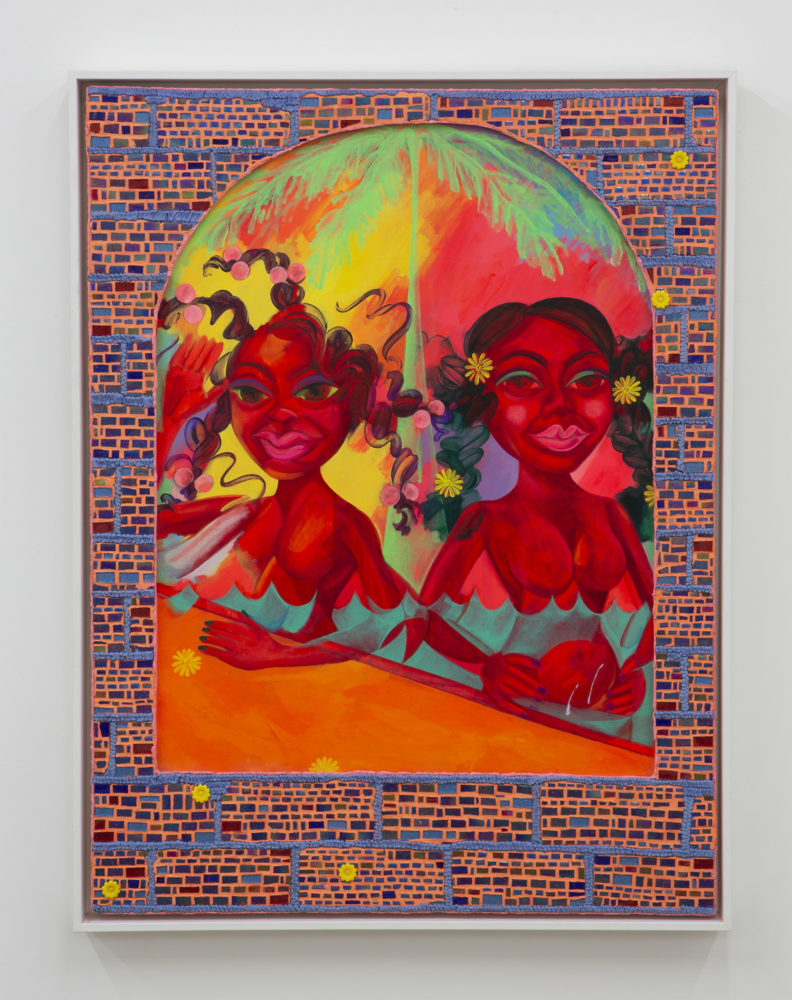 Skye Volmar, “Paradise Lost (City Girls),” 2020, acrylic, glass mosaic, flower barrettes, grout, and oil paint on canvas, 40 × 30 inches; courtesy of the artist and Deli Gallery.
Skye Volmar, “Paradise Lost (City Girls),” 2020, acrylic, glass mosaic, flower barrettes, grout, and oil paint on canvas, 40 × 30 inches; courtesy of the artist and Deli Gallery.
WW: The entire concept behind the exhibition is pretty loaded with the trauma incited by hyper-sexualization and young girls being made to grow up too quickly, but there is also plenty of beauty infused in the works—a light at the end of the tunnel, if you will. What was your approach here?
SV: I find beauty everywhere and especially within Black femininity. I love everything about femininity in black folks. It’s brilliant! Resilient! I want the work to say, “I see you and celebrate your will to not only survive, but triumph and thrive!” I want to create multifaceted works for myself and other folks, particularly Black folks who live in their feminine energy, who maybe were socialized as girls and/or women, and who identify with that experience.
I want to express all kinds of feelings…and yes, that includes trauma. I also want to hold space for conversations about Black trauma that includes Black people, and more specifically: Black women. I want to create conversation centered on survivorship, not victimhood.
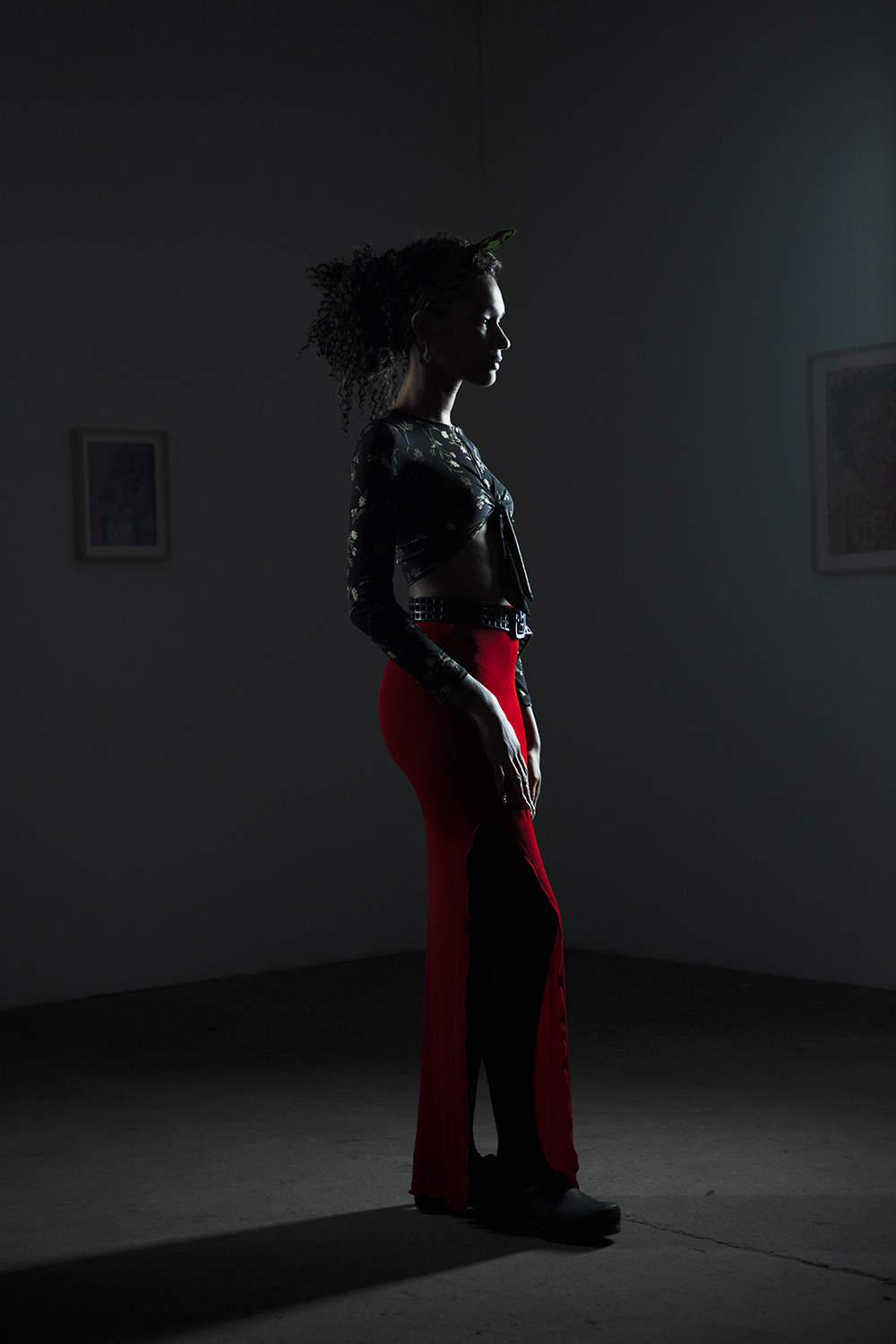 Portrait of Skye Volmar by Steve Benisty.
Portrait of Skye Volmar by Steve Benisty.
WW: Tell us about your exploration of the story of Echo and Narcissus in works like Echo and Apology: Bleeding Heart, Narcissus. Are there any other works on view that reference this story?
SV: I think the work has much to say about self-reflection and perhaps self-love, or lack thereof. So, Echo and Narcissus (a favorite story of mine, from time) is a meaningful entry-point. Narcissus is self-obsessed. Echo is Narcissus-obsessed. She can only speak when he speaks, say what he says; that’s what I expect a narcissist most wants to hear.
But, her words, his words, alone are not enough to satisfy his ego. She is a reflection, where he wants a mirror. He wastes away, pond-side, staring at himself. His death gives way to daffodils…I think of that yellow flower, while painting poolside barrettes in Paradise Lost (City Girls).
Narcissus dies alone, but Echo dies lonely. She never finds herself. I wondered what Echo would see, how she would feel, if she saw herself in his pond. Would she hold herself in high esteem, or would she see herself as he saw her?
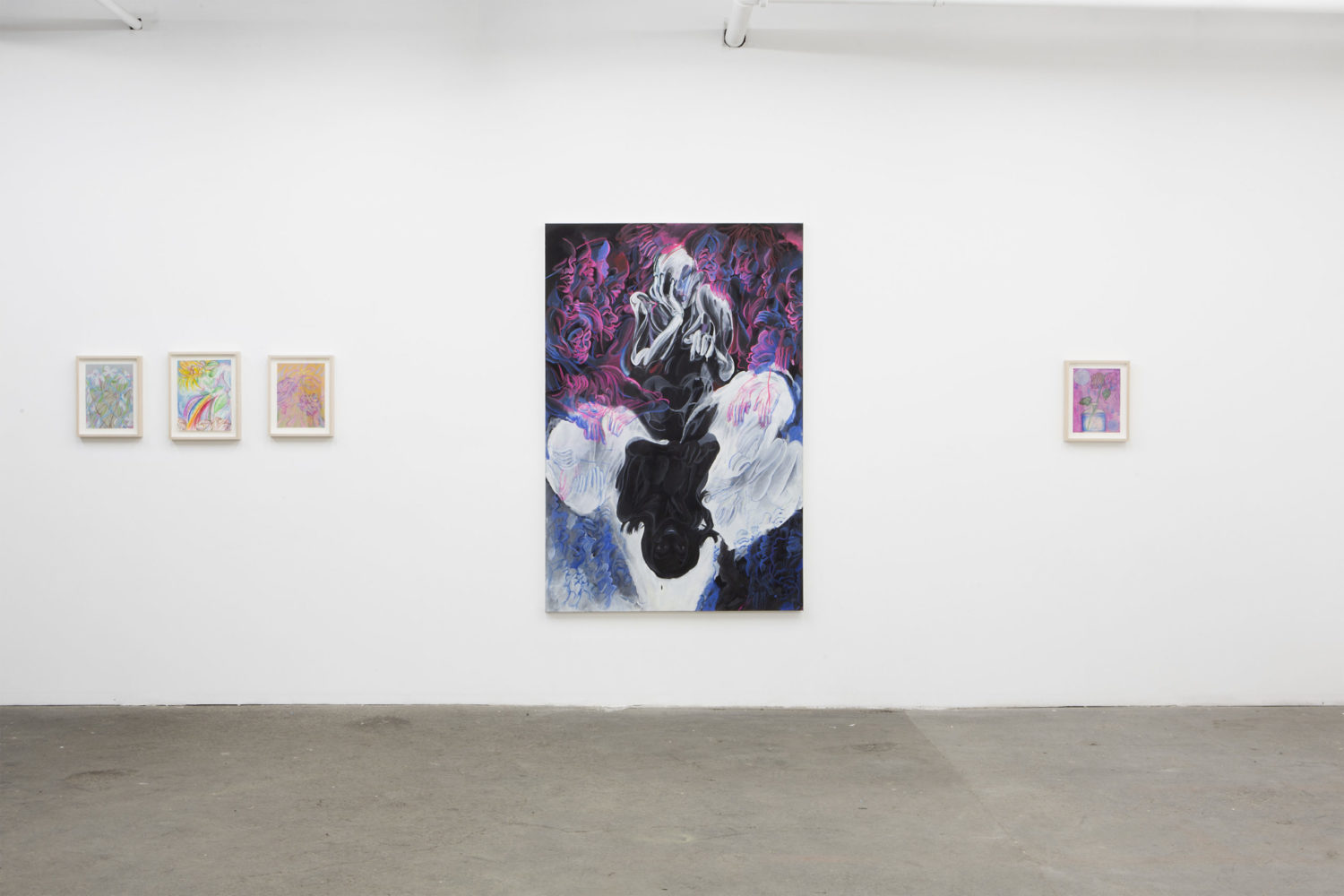 Installation view of Skye Volmar’s “flower, child,” courtesy of Deli Gallery.
Installation view of Skye Volmar’s “flower, child,” courtesy of Deli Gallery.
WW: You’ve said, “When painting, I simply prepare a surface for reflection- the rest is a mix of perception and projection.” How does this play into your practice as a whole?
SV: It’s different every time… Sometimes I look at pictures! Sometimes I sketch! Sometimes I smudge something on the surface, stand back, and see what comes up! Even if I’ve drawn it out a bit, there’s always discovery. There’s always something of the image sitting just outside my reach. The practice helps me to sift through my subconscious and so the story goes.
WW: Can you tell us about your studio space? What is a typical day like for you there?
SV: I’ve worked from home for the past 10 months because of COVID! That looks like a corner of my shared bedroom, a bunch of boxes, and a tent in the backyard. We keeps it real. Not sure I’d opt into it, but I loved living in such close quarters with my work as it progressed. At times, I’d have to turn a painting around, at my partner’s request. Otherwise, they watched us as we slept.
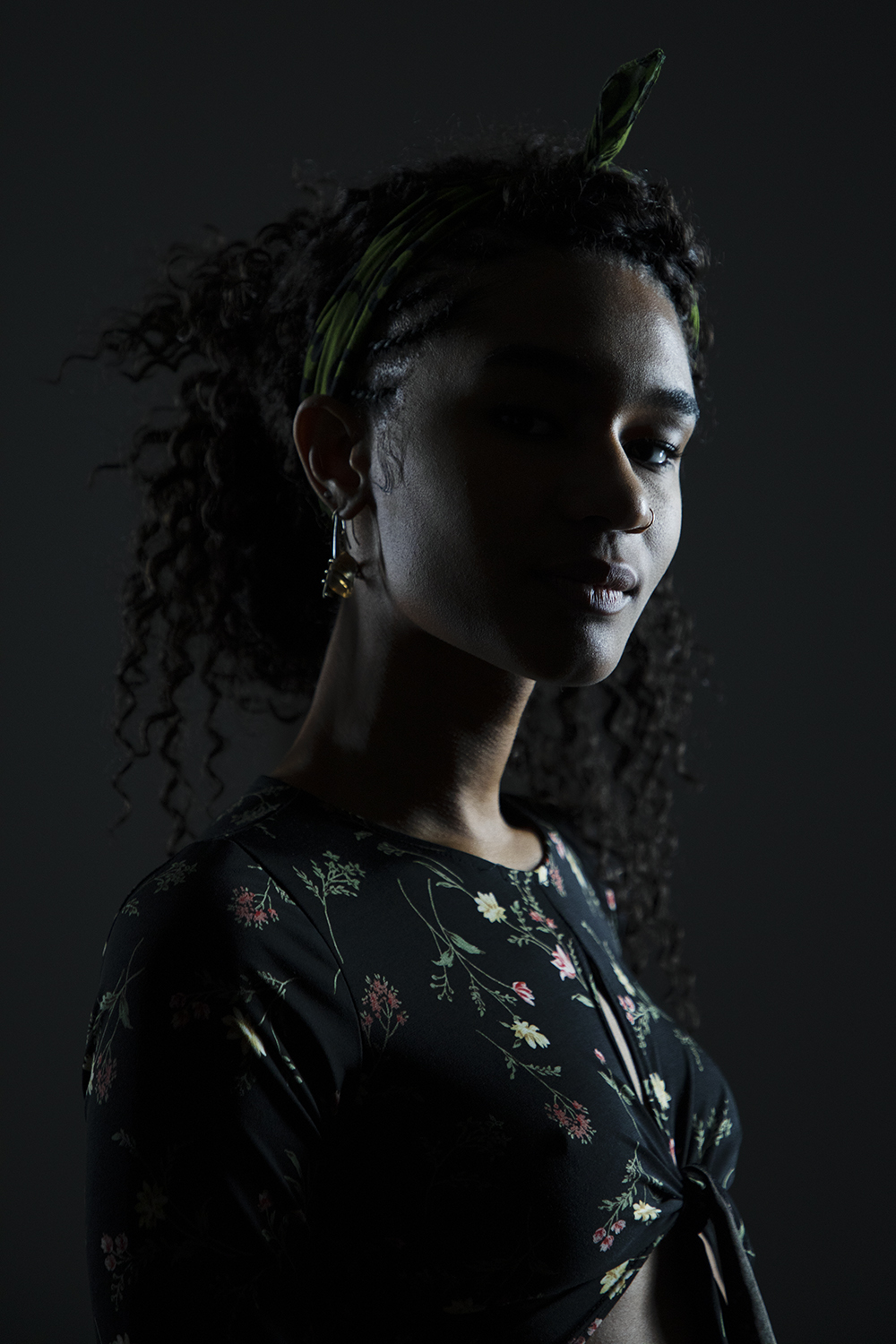 Portrait of Skye Volmar by Steve Benisty.
Portrait of Skye Volmar by Steve Benisty.









